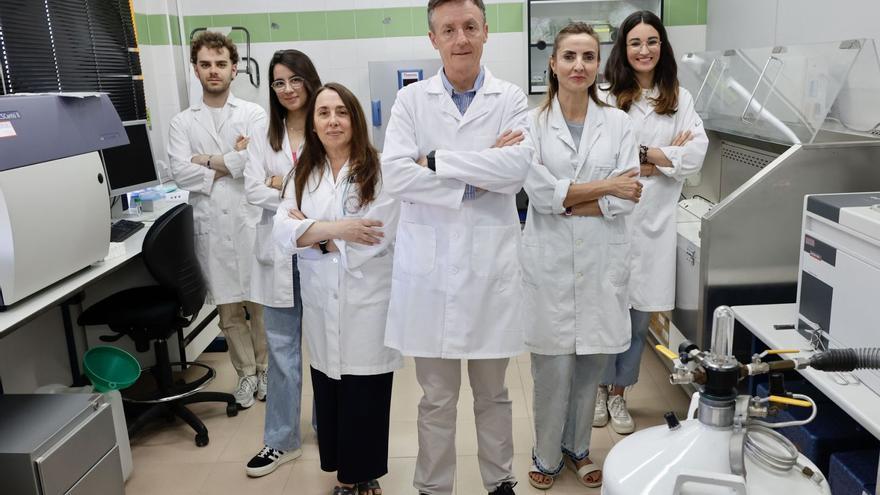UMU research confirms there is a tiny messenger that holds the key to treating male infertility.

Almost 18% couples trying to have children face difficulties According to the World Health Organization (WHO), one in six adults worldwide faces this problem. In about half of the cases, the male factor is to blame. Even though it is such a pressing problem, researchers are still in the process of identifying what causes it.
A little known little protagonist could be the key to success. clear up the mystery: extracellular seminal vesicles. The tiny particles are the subject of study by the Animal Andrology research group from the University of Murcia (UMU), which includes the principal investigator, Jordi Roca AleuProfessor of Animal Medicine and Surgery; Isabel Barranco CascalesRamon y Cajal Animal Medicine and Surgery Research Fellow; Ana Parra Hernandezdoctoral researcher; Pablo Martinez Diaz, doctoral researcher; And Xiomara Lucas Arjona Professor of Animal Reproduction.
Nanometer size
extracellular vesicles These are tiny messengers that travel from one cell to another, carrying important information needed to ensure the proper functioning of our organs. “With a nanometer size similar to that of a virus, they act as delivery vehicles loaded with proteins. nucleic acids and other important molecules,” the researchers explain.
Extracellular vesicles are particles that, according to the UMU Animal Andrology research group, “are not only essential for maintaining physiological processes in the body, but also play a fundamental role in the occurrence and development of diseases, including cancer.” In fact, they add, “all—absolutely all—of our body fluids contain these extracellular vesicles.”
In the context of reproduction, the mission of these particles is “key”, since they are responsible for “transporting molecules between the cells of the male and female reproductive tract, regulating the most important processes that determine the state of reproductive function.” reproductive success” Research has shown that they interact directly with sperm, “playing an important role in preparing them for the journey to the egg and subsequent fertilization.”
Moreover, as UMU researchers emphasize, “They have the ability to change the immune response of the uterus. create a receptive environment that allows implantation and subsequent development of the embryo.
These particles play an irreplaceable role in the creation of new life.
Essential for life
Simply put, seminal extracellular vesicles are “necessary tools in the first steps of creating a new life. However, according to experts at the University of Murcia, “these functions are due to a fundamental aspect: their composition.”
An exhaustive review by Animal Andrology analyzed more than 1400 scientific papers and came to the conclusion that the seminal extracellular vesicles are not just observers of the reproductive process.
They could promote the distribution of drugs that eliminate possible causes of infertility.
One of the most important findings is “how its composition may differ between fertile men and those with fertility problems, mainly regarding proteins and small nucleic acids” This suggests, the researchers emphasize, “that certain components may play a critical role in regulating reproductive function.” Thus, “through analysis of their contents, seminal extracellular vesicles are emerging as potential markers of male fertility, opening a promising avenue for the development of diagnostic tests.” more accurate and non-invasive”
As stated UMU Research Group“Integrating knowledge of extracellular seminal vesicles into clinical practice may change the diagnosis and treatment of male infertility, especially when it is of unknown origin.”
Modification to the letter
In this sense, they emphasize “advances in the field molecular engineering “They will allow the composition of these vital particles to be modified on demand so that they transport and distribute drugs or molecules into cells that reverse conditions thought to cause infertility.”
However, “although the results are encouraging, research on this issue is still at a relatively early stage,” experts warn, “as more experimental and clinical studies are still required.” In addition, they note that “it is critical to improve and standardize vesicle isolation protocols and characterization,” as “this will ensure the reliability of the results.” are consistent and comparable between different laboratories.
